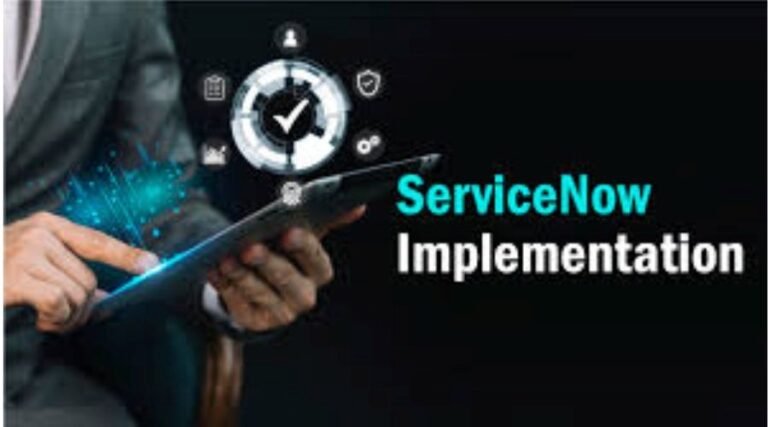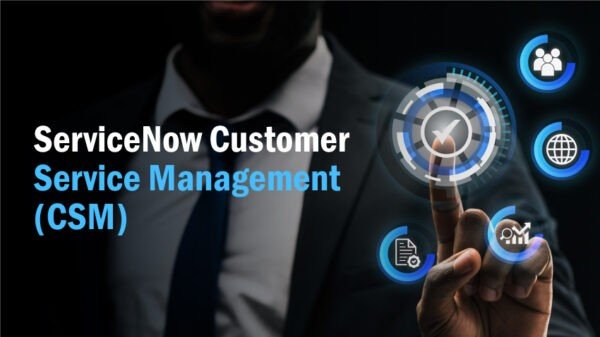ServiceNow GRC: Everything You Need to Know
14 +
Years of Experience
550 +
Happy Customers
250 +
Years of Tech Leadership Exp.

"License Reseller" and "Consulting & Implementation" Partner

In today’s fast-paced, highly regulated world, governance, risk, and compliance (GRC) are important parts of running a successful business. Organizations are looking for smarter, more integrated solutions to manage risk and stay compliant as they become more reliant on third parties, cyber threats change, and industry rules get stricter. That’s where ServiceNow GRC comes in. It gives businesses a single platform to make it easier to find and deal with risks, keep their operations running smoothly, and make sure they are following the rules.
What is ServiceNow Governance, Risk, and Compliance (GRC)?
ServiceNow GRC, which is now termed Integrated Risk Management (IRM), is a set of systems that assist businesses in automating and keeping track of their risk, compliance, and audit processes. It is built on the Now Platform and brings together business, IT, and security operations into one platform so you can see your risk posture in real time.
This implies that businesses may transition from reactive to proactive risk management, making sure that risk processes are in line with company goals and making the organization more flexible and responsible.
What are the most important parts of ServiceNow GRC?
ServiceNow GRC has a lot of capabilities that make governance easier, cut down on manual work, and make things more visible:
- Policy and Compliance Management: Automates the processes of making, sharing, and signing off on policies.
- Risk Management: Enables the entire business to assess risks, develop mitigation plans, and continually monitor progress.
- Audit Management: Plans and oversees internal and external audits to make sure problems are fixed quickly.
- Vendor Risk Management (VRM): Helps you keep an eye on and manage risks from third parties by doing assessments, tiering, and continual monitoring.
- Business Continuity Management (BCM): BCM makes strategies for how to respond to and recover from disasters, does business impact analysis, and makes the firm more resilient.
- Operational Resilience: Keeps services available during problems by using integrated testing, impact mapping, and real-time tracking.
All of these capabilities enable businesses to automate their processes, adapt to change more quickly, and better understand their risk profile.
What are the advantages of ServiceNow GRC?
ServiceNow GRC is a good choice for IT, risk, audit, and compliance teams since it has real benefits for all of them:
- You can see corporate risks and controls in real time.
- A single platform has made it easier for business and IT to work together.
- More efficient by automating tasks that are done by hand
- Better risk posture through proactive detection and mitigation
- Better teamwork between departments thanks to shared data and workflows
- Less time is needed to be ready for an audit, and fewer compliance gaps
In the end, it helps businesses lower their risks, make choices more quickly, and construct a digital business that can handle everything that comes its way.
What is the importance of governance, risk, and compliance?
Governance, risk, and compliance are very important for keeping a brand’s good name, following the law, and growing a firm in a way that lasts. Not managing risk properly may lead to big fines, regulatory action, or operational problems in businesses, including BFSI, healthcare, telecom, and manufacturing.
As digital change speeds up, businesses need a centralized, integrated way to stay compliant and encourage new ideas.
What Kinds of Risks Does GRC Deal With?
ServiceNow GRC gives businesses the tools they need to handle many different types of risk, such as:
- Cybersecurity threats (weaknesses, events)
- Operational risks include things like process breakdowns and problems with the supply chain.
- Risks from other parties (such as vendors not following the rules or services going down)
- Risks of not following the rules (breaking the law)
- Strategic risks include damage to your reputation and changes in the market.
- Risks to the environment and ESG
The platform lets you constantly monitor risk and gives you real-time capabilities for keeping track of controls, remedial activities, and metrics.
Related Read:
- ServiceNow Change Management: Features, Benefits and Best Practices
- What Is ServiceNow ITSM? A Complete Guide to Features, Benefits, and Implementation

What does the ServiceNow GRC Module include?
The ServiceNow GRC suite is made up of modular apps that may be used alone or in groups, depending on what the business needs:
Policy and Compliance Management
- Define, distribute, and track policies
- Map controls to regulations and frameworks (e.g., ISO, NIST)
Risk Management
- Identify and assess business risks
- Track mitigation plans and monitor effectiveness
Audit Management
- Schedule audits, track findings, and assign tasks
- Automate audit trails and reporting
Vendor Risk Management
- Manage party risk management lifecycles
- Conduct due diligence and ongoing risk scoring
Business Continuity Management (BCM)
- Conduct business impact analysis
- Create and test continuity plans
These modules work well with other ServiceNow products, such as ITSM, SecOps, and CSM, to make operations more resilient and compliant across the board.
What are some ways to use ServiceNow Governance, Risk, and Compliance?
ServiceNow GRC is used by companies in many different fields for many different things:
- BFSI: Keep an eye on compliance with rules, handle risks from third parties, and be ready for audits at any moment
- Healthcare: Make sure you follow HIPAA rules and keep an eye on clinical and vendor risks
- Manufacturing: Keep ISO certifications, make sure supply chains are safe, and keep operations running smoothly.
- Telecom and Tech: Keep an eye on product-related risks, follow policy frameworks, and follow privacy regulations
Some common use cases at the enterprise level are
- Including risk and compliance in digital transformation projects
- Making manual audits and assessments automatic
- Making it easier for the board to see risk and compliance metrics
- Improving third-party oversight in sourcing and buying
How can DevTools help you with the implementation of ServiceNow GRC?
As a ServiceNow consulting and implementation partner, DevTools can assist your business in maximizing ServiceNow’s capabilities. We have extensive experience implementing GRC/IRM solutions. We carry out assessments, integrate risk management into daily operations, manage policies and audits, and provide continuous control monitoring to facilitate proactive governance and simplified compliance. Additionally, we assist companies in converting high-touch, manual processes into automated, low-touch workflows and use AI-driven insights to optimize ROI. We can create and execute a solution that meets your needs, whether you’re launching a GRC program or looking to improve current capabilities.
Conclusion
It is now essential to manage governance, risk, and compliance in order to maintain growth, uphold trust, and navigate complicated regulatory environments. With its extensive modules for integrated risk management, business continuity, privacy, and third-party risk management, ServiceNow GRC unifies governance, risk management, and compliance under a single roof. It promotes cost-effectiveness and transparency while automating procedures, providing real-time insight, and building operational resilience.
Organizations should collaborate with specialists who are knowledgeable about both technology and GRC best practices in order to implement ServiceNow GRC successfully and reap its benefits.
Are you prepared to change the way you take risks? The ServiceNow consulting team at DevTools can help you with everything from planning and implementation to ongoing enhancement. With extensive knowledge of GRC and a history of delivering AI-powered workflows, we assist companies in automating procedures, enhancing compliance, and making risk-informed decisions. To start your path to robust, risk-aware operations, set up a consultation with a DevTools specialist right now.
FAQs
What does GRC mean in ServiceNow?
The Governance, Risk, and Compliance suite (GRC) in ServiceNow lets businesses manage their rules, risks, and compliance procedures all in one place.
What is the new name for GRC from ServiceNow?
People now commonly call ServiceNow GRC “Integrated Risk Management” (IRM) since it takes a more holistic approach to managing hazards in a business.
What are the four parts of GRC?
Policy and Compliance Management, Risk Management, Audit Management, and Vendor Risk Management are the four main elements.
What is the difference between IRM and ServiceNow GRC?
ServiceNow IRM is the next step in the evolution of GRC. It gives you a more strategic and integrated perspective of managing risk and compliance.
What kinds of GRC are there?
There are several kinds of GRC, such as IT GRC, Operational GRC, Financial GRC, ESG GRC, and Strategic GRC.
What are the rules in GRC ServiceNow?
Policies in GRC are official guidelines that help with compliance and risk management. You may use Policy Management to share and keep track of them.
What does IRM stand for in GRC?
IRM is short for Integrated Risk Management, which is a contemporary, all-encompassing way to manage risk in a business.




